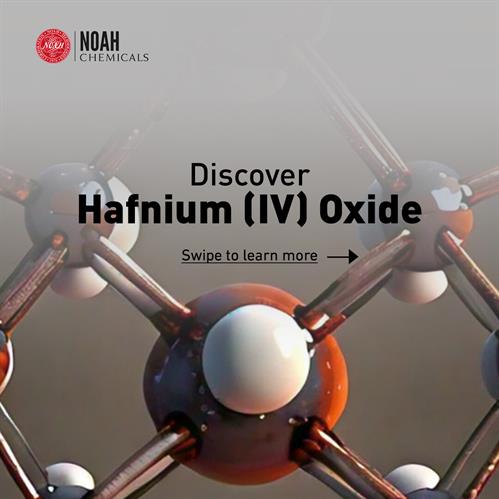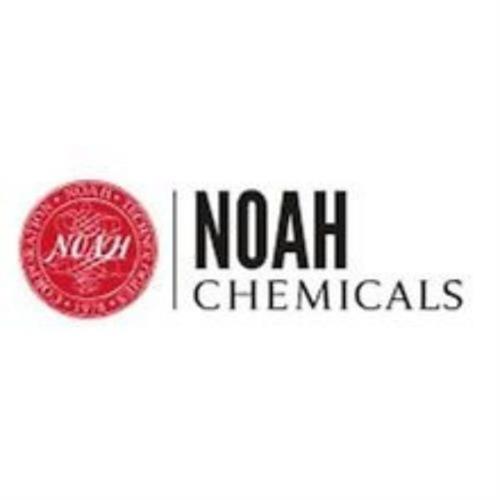Hafnium Oxide: A Key Material for Modern Innovation
In the world of advanced materials, few compounds have gained as much attention as Hafnium Oxide. Known for its strength, stability, and unique electronic properties, it has become a game-changer in industries that demand high performance. From microchips to spacecraft engines, this compound is shaping the future of technology.

This article explains what Hafnium Oxide is, why it matters, its properties, uses, benefits, and its role in tomorrow’s innovations.
Understanding Hafnium Oxide
Hafnium Oxide, often called hafnia, is a chemical compound made from hafnium and oxygen. It usually appears as a white, crystalline powder and is highly stable. One of its most important qualities is its resistance to heat and corrosion, which makes it perfect for extreme working conditions.
Because it is chemically similar to zirconium oxide but has unique benefits, Hafnium Oxide is often the material of choice in industries that require long-lasting durability.
Main Properties of Hafnium Oxide
What makes Hafnium Oxide so valuable is its impressive set of natural properties. Some of the most important are:
-
High thermal stability: It can resist breakdown at very high temperatures.
-
Excellent dielectric constant: Ideal for use in semiconductor devices.
-
Chemical resistance: It does not easily react with acids, alkalis, or water.
-
High melting point: It stays solid even at extreme heat, making it suitable for aerospace and nuclear technology.
-
Optical transparency: Useful in coatings for lenses and optical devices.
These properties are the foundation of its widespread industrial use.
How Hafnium Oxide is Produced
Hafnium Oxide is typically obtained during the processing of zirconium minerals. Since hafnium and zirconium are found together in nature, they must be carefully separated. Once pure hafnium is extracted, it is oxidized to form Hafnium Oxide.
Depending on the industry requirement, it can be produced in different forms, such as fine powders, thin films, or coatings. Each form has specific applications in electronics, coatings, or high-performance components.
Industrial Applications of Hafnium Oxide
1. Semiconductor Industry
One of the most important uses of Hafnium Oxide is in the semiconductor industry. It is used as a high-k dielectric material in microchips. Traditional silicon dioxide could no longer meet the demands of modern miniaturized electronics, so Hafnium Oxide became the replacement.
It allows faster, smaller, and more energy-efficient devices such as smartphones, laptops, and advanced computing systems.
2. Optical Devices
Hafnium Oxide is transparent in a wide range of wavelengths, making it perfect for optical coatings. It is used in camera lenses, laser optics, and anti-reflective coatings. Its ability to handle high-intensity laser beams without damage makes it essential in defense and industrial laser systems.
3. Aerospace and Space Technology
The aerospace industry benefits from the thermal barrier properties of Hafnium Oxide. Jet engines and rocket parts coated with this compound can withstand ultra-high temperatures without melting or breaking. This makes aircraft engines safer and more efficient while supporting the future of space exploration.
4. Nuclear Applications
In nuclear reactors, Hafnium Oxide is used because it absorbs neutrons effectively and resists radiation damage. This makes it suitable for control rods and protective coatings inside reactors, improving both efficiency and safety.
5. Renewable Energy
In solar cells, Hafnium Oxide is used to improve efficiency and protect sensitive parts from heat and wear. It is also being researched for use in advanced energy storage systems, including batteries and capacitors, due to its stability and insulation abilities.
6. Chemical Industry
Hafnium Oxide is sometimes used as a catalyst or support material in chemical reactions. Its durability allows it to function well even in environments where high heat and strong chemicals are present.
Benefits of Hafnium Oxide
The popularity of Hafnium Oxide comes from the many benefits it offers, such as:
-
Longer lifespan of devices and machinery.
-
Better efficiency in electronics due to strong dielectric performance.
-
High safety in nuclear and aerospace applications.
-
Versatility, as it can be shaped into films, powders, or coatings.
-
Ability to improve renewable energy systems.
These benefits make Hafnium Oxide an irreplaceable compound in modern industries.
Challenges in Using Hafnium Oxide
Despite its advantages, there are some challenges:
-
High cost: Extracting and refining hafnium is expensive.
-
Limited availability: Hafnium is not found in large amounts in nature.
-
Complex processing: Achieving the purity required for electronics takes advanced technology.
Even with these challenges, the demand for Hafnium Oxide continues to grow because of its unmatched qualities.
Future Outlook of Hafnium Oxide
The future of Hafnium Oxide looks bright. With rapid advances in artificial intelligence, quantum computing, aerospace, and clean energy, the need for this compound will increase. Researchers are also exploring its role in medical devices and next-generation sensors.
Its ability to perform under extreme conditions ensures that Hafnium Oxide will remain at the center of innovation for decades to come.
Why Hafnium Oxide Matters Today
Everyday technologies like smartphones, laptops, and solar panels rely on Hafnium Oxide in one way or another. Without it, progress in electronics and energy systems would slow down. By making devices more efficient and long-lasting, Hafnium Oxide helps industries save costs while reducing environmental impact.
It is not just a material for specialists—it is a hidden force that powers the modern world.
Conclusion
Hafnium Oxide is more than just a compound; it is a driving force behind modern technology. With its thermal resistance, insulating abilities, and chemical stability, it serves industries ranging from electronics to aerospace. Although challenges like cost and availability exist, its benefits far outweigh these issues.
As the world moves toward more advanced, sustainable, and efficient systems, Hafnium Oxide will continue to play a critical role in shaping the future.
FAQs About Hafnium Oxide
Q1: What is Hafnium Oxide mainly used for?
It is mainly used in semiconductors, aerospace, nuclear reactors, and optical coatings.
Q2: Why is Hafnium Oxide important for microchips?
Because of its high dielectric constant, it helps create faster, smaller, and more energy-efficient electronic devices.
Q3: Can Hafnium Oxide handle high heat?
Yes, it has a very high melting point and excellent thermal stability, making it suitable for extreme environments.
Q4: Is Hafnium Oxide safe?
When handled properly, it is stable and safe for industrial use.
Q5: What does the future hold for Hafnium Oxide?
It is expected to expand into renewable energy, medical technology, quantum computing, and space applications.





